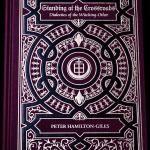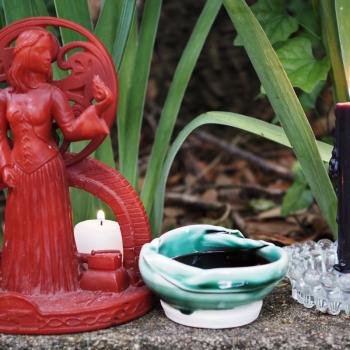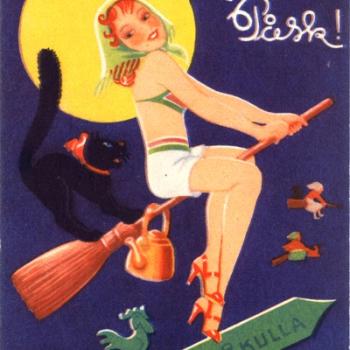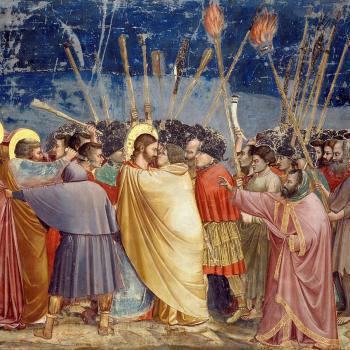Caveat: these are my own views, for which I make no apology, and are not representative of any person or organisation other than myself. What I’m about to say might be controversial, indeed unpopular. Lay on, Macduff!

An opinionist, I fear to advocate an argument, or compromise myself by believing my own doctrines as such… may they ever be their own expurgers! Fearsome of knowledge, may my belief be its emptiness, yes, ignorance!
The Book of Pleasure, A. O. Spare
The 20th century occult world was informed by a now long debunked pseudo-scholarly idea of witchcraft. Popularised by folklorist and early anthropologist Margaret Murray, the notion of an underground, secretive witch cult and surviving pagan religion flourished and found ground amongst the minds of those who sought solace in nature from the chaos and destruction of two world wars. The notion of a witch cult developed organically from this limited information, concisely packaged and redistributed in plagiarised form. Such texts as Leland’s (similarly demystified) Aradia and Frazer’s The Golden Bough ignited the touch paper of a cultural harkening for a golden age to replace the industrial machinery of war that had shook the very foundations of people’s worldview. This sentiment is nowhere better expressed than in TS Elliot’s The Wasteland, drawing from the imagery of Arthurian myth and referencing a land ravished and barren, awaiting its salvation.
It was a short step to a conceived witch God in the form of a Pan-like figure, and a mysterious female supreme deity would surely suckle her people and replace the absent father figure who had brought such perceived desolation. It was easy to convince ourselves that the devil was a Christianised form of the pagan Witch God, as though Christians knowingly and deliberately perverted a pagan figure into the subversive antithesis of the saviour Christ. Whilst reflections of earlier, principally Hellenic, paganism is undoubtedly to be found in the archaeology of Christianity, to imagine that it was a concerted work with deliberate intention, concealing a long-lasting pagan cult, is simply fallacious.

Towards the end of the century, momentum had grown and the counter-culture movement had helped accelerate the growth of ‘alternative’ religions, and paganism and witchcraft prospered, basking in the newly founded beliefs of Murray, Leland and, importantly, coalescing through the filter of Crowleyan ritual material, Gerald B Gardner. Arcane poetry and rhetoric was regurgitated ad infinitum, the Wiccan Rede becoming cemented to the new tradition, appearing in book after book as ancient writ, despite Doreen Valiente’s best efforts to admit that it is her handiwork. No, a new old tradition had matured into puberty and it could not be parented anymore, even by the hand of the ‘Mother of modern Witchcraft’ herself.
With Professor Ronald Hutton’s biography of modern paganism and witchcraft, Triumph of the Moon, the narrative fallacy was exposed but not diminished. Whilst introducing us to some of the key figures and developments in the milieu of the 20th century neopagan and witchcraft revival, we are left with a fresh perspective which, while acknowledging it as an invented tradition, nevertheless accepts the validity and necessity which accompany the movement today.
That said, there has emerged a fresh trend as the movement gains in richness and diversity. On the one hand, so popularised has witchcraft become that a whole host of books are produced, many catering to those primarily focussed upon empowering the individual and serving the accepted pop culture icon. Such an image is evidenced and promulgated through television and film, especially Charmed and, more recently, The Chilling Adventures of Sabrina.
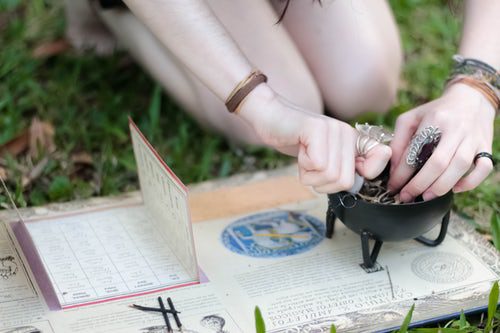
Another apparent pattern is to seek new connections in history, in a kind of parallel of Murray but, in light of the theory’s errors, resurrecting possible Norse and Anglo-Saxon elements, thereby tying modern witchcraft to a perceived past and anchoring its authenticity in a possible timeline. Whilst the historicity of this may stand scrutiny, we see a renewed interest in the religious urge that drove the early twentieth century pseudo-academics. These pioneering individuals sought out and theorised a continuance of a religious and spiritual tradition, one more aligned to the earth and nature. More importantly, we might see in this a reaction to post industrialism and the apocalyptic sentiment emerging as a direct result of the abomination of war on a grand scale.
Man is a ratio of his experience, but the subconsciousness is all-knowing (limit unknown).
THE ZOËTIC GRIMOIRE OF ZOS: The Formulae of Zos vel Thanatos, Austin Osman Spare
None of this, of course, suggests that our predecessors were entirely without the magical impulse, or belief in witchcraft. On the contrary, magic was perhaps more alive and present in the worldview of the medieval mind than ever it was post Enlightenment. Indeed, medieval Catholicism was itself a highly magical current in the general perspective and, with the dawn of Protestantism, became colloquially known as the “Old Religion”. Once Papist authority had been usurped, people sought their magical satisfaction elsewhere, from the cunning man, astrologers, ‘water doctors’, and folk magic practitioners of the day. These thrived into the 20th century, quite unattached to the burgeoning neopagan movement or occult scene of the Golden Dawn, OTO, and others. And so it was that the spirit of the witch, the identity and character of that force, acquired its recognisable features, imbued with the essence of what it was to be a witch by the psyche of the very people who believed in such things. So potent was the image of the witch that we all recognise the archetypal depiction even today, replete with pointed hat, hooked nose, protruding chin, black cat, broomstick, warts and all!

When we hear claims of initiation by a witch, historically as in cases like artist Austin Osman Spare(1886- 1956), we make a mistake when we fail to produce the evidence of physical personage. Indeed, I would maintain that this error demonstrates a lack of understanding of Spare and his magic, his spirit filled world. The collective recollection of the witch informs our experiences and relationship with witchcraft, initiating us into its current and stream culminating in the vision of the sabbat itself. None of this is to discredit the important work of neopagans, Wiccans, Druids, Traditional Witches and associated movements who are ably providing spiritual sustenance where a failed church has left a considerable lack, and which science has utterly underestimated. The inevitable question would be, where should we be looking.
In some answer, I might suggest that there is a plethora of work being produced by brilliant people who are exploring the folk magic which existed in the past, correcting errors and placing it in context, but ultimately useable to the modern magician with a taste for the magic that our forebears knew well. People we should be paying attention to include Peter Hamilton-Giles, Alexander Cummins, Jake Stratton-Kent, Griffin Ced, Jim Baker, Johannes Gårdbäck, Martin Duffy, Cecil Williamson and Austin Osman Spare. Fundamentally, in order to experience direct connection to witchcraft, we need to bring about and realise a paradigm shift which will bring us into contact with the witch herself, in her many forms throughout time, and establish a working relationship. Echoing Spare, the working witch experiences, indeed cultivates, a deliberate stepping out of the accepted and everyday worldview and seeks the patterns of the subconscious, the underworld, traversing the layers within which it operates through intuitive belief. By means of the shifting paradigm, we may come toward the dream-state, and with it the vision of the Witches’ Sabbat.

The Witch so engaged is old, grotesque, worldly and libidinously learned and is sexually attractive as a corpse; yet she becomes the entire vehicle of consummation. This is necessary to transmute the personal aesthetic culture. Perversion is used only to overcome moral prejudices or conformity; the mind and desire must become amoral, focused and made entirely acceptive so that the life-force is free of inhibitions prior to the control. Thus, the Sabbath becomes a deliberate sex-orgy for the purpose of materialization: the Great Reality of ‘as if’ (wishful thinking). Sex is fully exploited: he who injures none, himself does not injure.
THE ZOËTIC GRIMOIRE OF ZOS: The Formulae of Zos vel Thanatos, Austin Osman Spare
By exploring the folk magic traditions that are culturally embedded in our identity, we must accept a worldview that is, nevertheless, distant to our own. In this regard, it is incumbent upon us to remember that the cultural background of the folk magic practitioners of their day reflects and reacts to the underlying beliefs of their social world view. That is to say, the neopagan and modern witchcraft idea of the village witch is, perhaps, removed from the reality. Where the real marrow is found is in the very bones of the practice and the mindset it demands, which in turn requires us to consider our own worldview.



